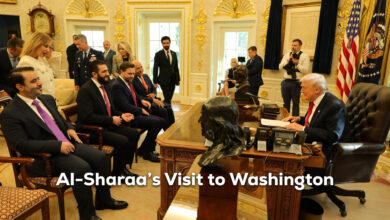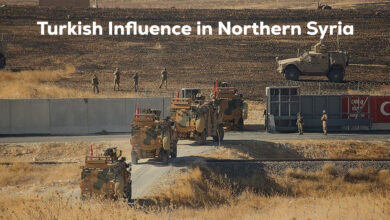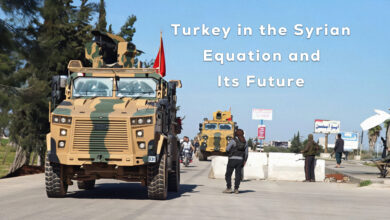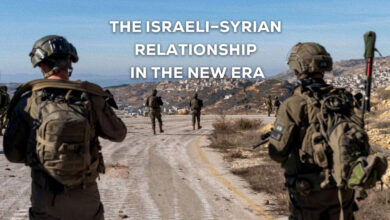Horizons of the regional and international politics of the Syrian crisis
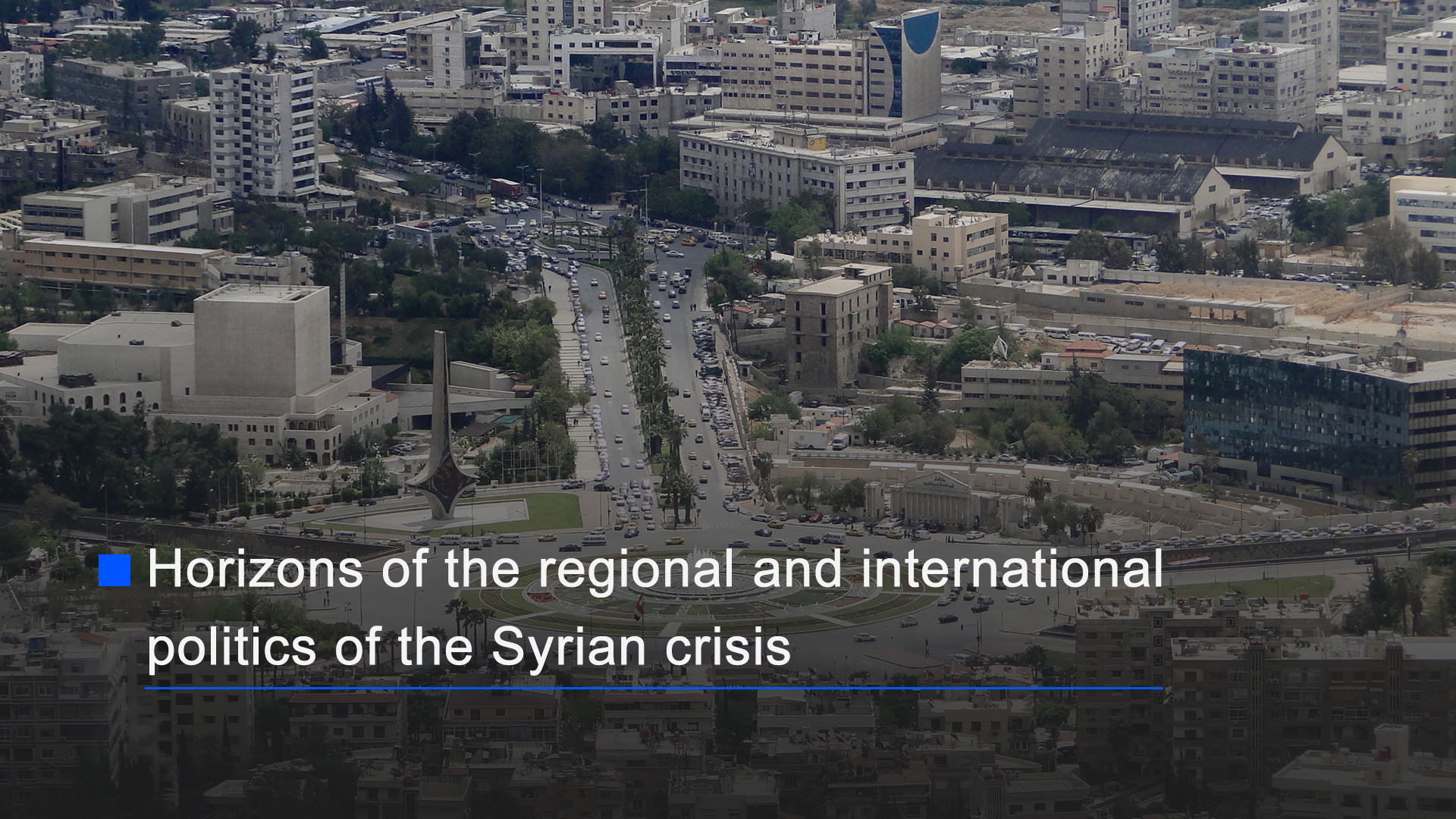
When the winds of change blew in Syria, the people were ready for it because they suffered greatly from the tyrannical regime and the tight security grip. These winds fueled the massive demonstrations, which continued and followed dramatically to include the entire Syrian geography, as they met with horizons and echoes in the east and the west, signaling the overthrow of the corrupt regime. As a result, countries intervened to activate them more and to manage and direct them according to the compass. They created organizations and militias in the squares and regions with strange names and strange titles that prevailed insecurity and chaos. Borders, sanctities, history, bloodshed, and taboos were not spared from their evil, and they plunged the country into creative chaos – which means undermining the economy, destroying infrastructure, and turning cities into ruins. They eliminated the components and elements of life in the country and the country became internationally, regionally and internally permissible. This is a double-edged policy:
First: The regime is a corrupt and tyrannical dictatorship that does not respect the rights of minorities and does not pay attention to people’s rights to freedom of opinion and expression, the press, equal opportunities and citizenship rights. The country has become a farm for it to act in every possible way until the situation has become like a powder keg that has exploded in the country, so that conditions will allow for the overthrow with this regime.
Second: It is planned, programmed and fabricated, and is in harmony with people’s convictions and opens up to various horizons, which is to draw maps of the region anew in a new Middle East. From here, interests began to conflict, intertwine and contradict over a Greater Middle East, so these demonstrations and protests took on a domestic, regional and international dimension.
In order to understand the reality of the conflict, it is necessary to look at the international dimension in order to understand the nature of the interests and objectives of these countries in a deeper way. The Syrian issue is internationalized:
At the international level: Let us discuss the entry of these countries and their interests, state by state, to deduce what is logical from the causes, goals and results.
The first question is: Why did Russia respond to Bashar al-Assad’s invitation with gratitude?
The answer: Syria is an important country with an important geographical location. It is the node of transportation and the cradle of civilizations and is rich in its underground wealth. Russia’s goal is to reach warm waters where there is abundant gas, and to strengthen its foothold in this important spot to confront the West and its plans. Therefore, the crisis regime concluded agreements with Russia where it handed over ports and airports. In turn, Russia used its air force against the opposition and managed to regain 70 percent of the Syrian geography, so that Russia has become the fighter and media defender of Syria and its defunct regime, which has become a puppet in its hand, and the Russian decision has become the one in force in Syria.
The second question is: Why did the US and its allies intervene in the east of the Euphrates?
The answer: Wherever there is tension, there are the Americans, and wherever Russia enters, America is on the lookout for it. America’s entry into Syria is not a mere coincidence, rather it is a planned and systematic entry with a strategic dimension, even if it was vague and foggy. The US always finds logical reasons for its entry into any area, so it justifies its entry by fighting the extremist Islamic organization that has committed the most horrific crimes against humanity, and its crimes have reached European countries that hastened with the Americans to create the international coalition to fight this organization, according to which they eliminated it geographically to protect global security from its evil, which still exists intellectually and humanly with its sleeper cells that are active from time to time. With the entry of the Americans and the coalition in Syria, the conflict has taken on an international dimension.
At the regional level: Why did Turkey interfere in the Syrian affairs?
The answer: Turkey is an important regional country that is adjacent to the epicenter of international tension and conflict and has its own interests and agendas. It is the one that opened the door wide for the entry of refugees, whom it used for its own benefit, and it is the one that blackmailed Europe. Its goal of this entry is to “Brotherhood” the region, restore the glories of the Ottoman Empire, revive the Milli Pact, occupy and annex parts of Syria, fight the Kurdish presence and abort the Autonomous Administration project under the pretext of its national security, and it is the one that claims to be fighting terrorism knowing that it armed, funded, trained, and brought in all members from its airports and transported them with its trains and pumped them into both Iraq and Syria. More than that, Turkey is the one that empowered these extremist organizations over the Kurdish regions under various pretexts and different names, like “Olive Branch”, “Euphrates Shield” and “Peace Spring”. Their goal is to separate the Kurdish regions from each other and prevent them from access to the sea. The funny thing is that Turkey claims to fight terrorism and is a sponsor of creating it.
At the Iranian level: Why did Iran intervene since the early days of the Syrian revolution?
The answer is clear and simple: The Syrian-Iranian relationship is an ancient strategic one since the rule of Hafez al-Assad, as it considers Syria a country that revolves in its orbit and a passage for it to reach the sea. Iran is a country that goes through an internal crisis, and it is a country ruled by a handful of rotten minds and its system is unique in the world, the system of the Guardianship of the Islamic Jurist. It establishes its agendas to run the country with fire and iron, and there is no room for human rights in it, and scatters its economic capabilities abroad with the aim of exporting its worsening crisis to the Houthis in Yemen, Hamas in Palestine, Hezbollah in Lebanon, and the militias and parties loyal to it in Iraq and Syria to create a “Shiite Crescent” corridor, not to mention its nuclear program which disturbs the world and threatens security and stability in the world.
At the Israeli level: It is a state supported by the East and the West. Its concern is to eliminate everything that threatens its security at home from the Palestinian organizations, and abroad from Hezbollah and behind it Iran, which provides it with money and weapons to create confusion and chaos in it. So, it strikes relentlessly all the places that the Iranian militias, Hezbollah and its warehouses are present. Israel also strikes Iran’s nuclear program by various means, as it is a country that is strongly involved in the conflict.
At the Arab level: Some of them have been blown by the winds of change and are still suffering from its repercussions, such as Libya, Iraq, Tunisia and Egypt, and some have relied on relative calm, while others are still raging in conflict, such as Sudan, Libya and Yemen. However, the Gulf states are rich and relatively stable, and they are under the American umbrella.
After all this narration on the international and regional dimensions, it must be projected on the Syrian internal situation.
As a result of a conflict that exceeded a decade, the regime became economically and militarily dilapidated, where life has never existed and smelled of death and destruction. It has become a devastated state, dispossessed of management, controlled by Russia in the media and Iran as a human being, and it is deeply entrenched in its joints. Both Russia and Iran are the two countries that consolidated the dictator’s seat and returned 70 percent to his possession, but it became a failed state, and as compensation for the continuation of its approach, it resorted to the drug industry and flooded the Gulf and neighboring countries with drugs, and its fragments reached various countries, as it is a country far from a political solution which has bet and is still betting on the military solution that it finds its survival in it, as this regime is deceitful and devious and can never be trusted. It is good at twisting and turning and manipulating roles and positions to gain more time in prolonging its survival. Its key is in Russia and Iran.
It refuses to sit with the opposition altogether and refuses to sit with the Syrian Democratic Forces (SDF), bearing in mind that these forces own 30 percent of the Syrian geography. These forces, which are made up of the Syrian fabric of Arabs, Kurds, Chaldeans and Assyrians, and they defeated the most powerful terrorist organization in the world in its last stronghold in the town of Baghouz, are forces with a national project, which is the “democratic nation” project. They are with the unity and integrity of the Syrian lands and are far from projects of secession and undermining the unity of Syria. It is the one that preserved the institutions and established the bases of security and stability in the east of the Euphrates, and was able to manage the region and accomplished many huge achievements in the most important sectors, including health, education and service, relying on all components. They are the one that have been fair to women and have shown great interest in them because of their effective role in war and peace. They are the one that constantly extends their hands to the central state to find solutions, but it is in vain, as the regime ignores all these positions and achievements.
This complete listing of the internal, regional and international dimensions leads us to this question, which is the demand of every Syrian: What is the solution?
The solution in Syria, in my opinion, is not easy and is not close. Currently, America is trying to clean the region from intruding elements in the al-Mayadin and Deir ez-Zor regions from foreign and Iranian militias, and is trying to pressure and tighten the screws on the regime by enacting laws, including the captagon and dragging the Arab system to reveal its nakedness and show its truth that it does not comply with UN Security Council Res. 2254. This regime does not respond and does not disappear with a peaceful solution, but rather with a military coup, and this matter depends on international and regional tensions, and the solution will remain far away unless the interests of the countries involved in the conflict are crystallized.

